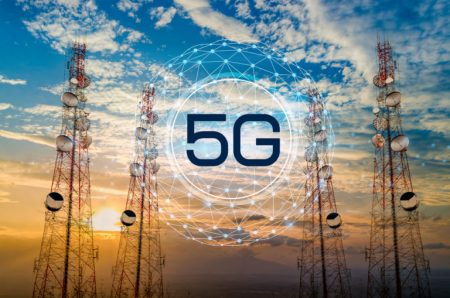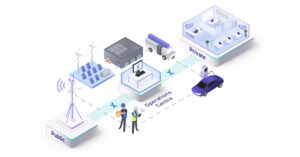Part 2 of 8: Embracing Shadow OT In Telecommunications
If Operational Technology (OT) is defined largely by the functionality and criticality of assets, then wireless telecommunications infrastructure would certainly qualify. Goods and services related to the Radio Access Network (RAN), LTE / 5G core and mission critical attached devices directly impact economic outcomes, physical assets and human life – think of mobile point of sale (POS) systems, utility infrastructure and e911. In this blog post, we will investigate the possible opportunities of OT transformation in the Telecom sector using a real but anonymous case study.
Case Study
Suppose a telecommunications provider has the following profile:
-
-
- Years in business: 100+
- Annual Revenue: > $1 B
- Annual Net Income: > $0.13 B
- Annual Capex budget: > $0.308 B
-
-
-
- Subscribers: > 0.831 M
- YOY wireless $ growth: > 36%
- Wireless services ARR growth: > 6%
- FTE Staff: > 3,000
-
*Note: All data was provided from publicly available sources.
This case study candidate has strong consumer adoption and loyalty in their home market. Corporate values are driven by customer satisfaction, digital transformation, workforce engagement and the goal of pivoting the revenue mix toward Information and Communications Technology (ICT) sources by expanding on world class broadband services as a base. They are well positioned to achieve amazing growth over the next decade with a renewed focus on enterprise customers of various verticals.
How this transformation plays out, though, will tell the tale. Should this candidate carry on with traditional methods of large capital investments? Continue to own and operate goods and services built on the value chain of wireless services? Or should they consider a shared risk delivery model that relies on Shadow OT?
Is This Candidate Company Fit for Adopting Shadow OT?
Shadow OT can have different connotations depending on your philosophy behind service delivery. Buying, commissioning and operating critical services provides the benefit of full operational knowledge and transparency for better or worse. On the other hand, a shared risk model forgoes some nitty gritty knowledge of service delivery and support, but gains economic and risk mitigation advantages.

Suppose the candidate company is well down the path of deploying 5G for their subscriber base using a traditional Do It Yourself (DIY) model. The capital budget required to deliver 5G to 831,000 subscribers in their geographically large home market could easily exceed $1,500,000,000 over the next few years. The capital expense alone would necessitate a lifetime value (LTV) of over $1800 per subscriber.
Furthermore, wireless bundles for LTE services are rapidly declining in value. While 5G is a game changer for industry, consumers are unlikely to pay more than $50 per month. The LTV in this case is roughly $1200 per subscriber. That could leave a $600 per subscriber shortfall resulting in a $498M miss during the early days of the consumer focussed 5G program roll out.
So what is a well established telecommunications provider to do?
Shared Risk, Shared Reward
Sharing risk also means sharing the reward. Over the past decade, hyperscalers such as Google, Amazon, and Azure have proven this model to be a winning strategy in the Information Technology (IT) space. As such, Shadow IT has largely taken the place of in house Enterprise IT service delivery and support.
Adopting a Shadow OT delivery model for strategic 5G investments could measurably benefit the CAPEX and ongoing OPEX of the candidate by moving to a consumption based fee schedule that directly ties cost to revenue. However, this would require an acknowledgement of hyperscalers’ ability to deliver “carrier grade” services – as well as a substantial cultural shift within the telecom candidate.

While embracing a Shadow OT delivery model would be advantageous to the candidate, it could also benefit enterprise subscribers in the home market and beyond. Bringing “true cloud” hyperscaler services into the telecom data centers, telco edge and even enterprise edge will reduce latency and backhaul charges while increasing the velocity of innovation for enterprise. As a result of a share risk / reward model, the candidate could substantially increase ICT based ARR by building on a solid base of broadband through bundling mission critical application services and devices into well established procurement models. Whatsmore, doing so would increase the strategic value of the candidate while increasing the stickiness of goods and services long term.
The candidate could take lessons learned from Peter Thiel’s “Zero to One” method of dominating a specific solution in a vertical market. This could be rolled out globally in cooperation – not conflict – with hyperscalers. Importing new sources of external revenue into a regional telecommunications provider is essential for generating the revenue required to sustain world class consumer services.
Evolving Company Culture
Shifting a telecom culture from “network love” to “customer love” is no easy feat. As an example, Amazon AWS reportedly saw a 1286% increase in quarterly revenue from Q1 2014 until present with a relentless focus on customer satisfaction and innovation. This was achieved with a culture that allowed for experimentation and blameless operations with a willingness to fail fast. During the same period, the telecom candidate saw ICT growth below 10%. Clearly, digital transformation equally requires cultural transformation to realize lasting impact.

The opportunity to implement rapid and measurable increases in both revenue generation and net income have already been proven by former staff and citizens within the home market. This market has produced the co-founders of Cloudflare (Mkt Cap $32B), as well as executive leadership at Suncor (Mkt cap $39B), Pattison Group (est $10B), Arye Group (est $1.2B) and many more. Together, the home market ex-pats and current citizens have generated more than $80B of market value.
Getting the right mix on the Board of Directors and special committees around Digital Transformation or Innovation is essential. Culture change will require top down support and modeling of the desired behaviour in combination with bottom up cultural adoption.
The Shadow OT Opportunity for Telecoms
Shadow OT is not the enemy of industry or even telecommunications providers. In reality, executing in partnership with external service providers such as hyperscalers, B/OSS providers like Totogi, consumption based Open RAN providers, or enterprise-first connectivity platforms like Expeto and its disruptive NeXtworking™ solution could foster a much needed alliance for telecommunications providers worldwide.
5G deployments are underway. Enterprise digital transformation is essential for survival. Will you position Shadow OT as friend or foe?
To read more in Brian Baird’s Shadow OT series, click below!
Sources






